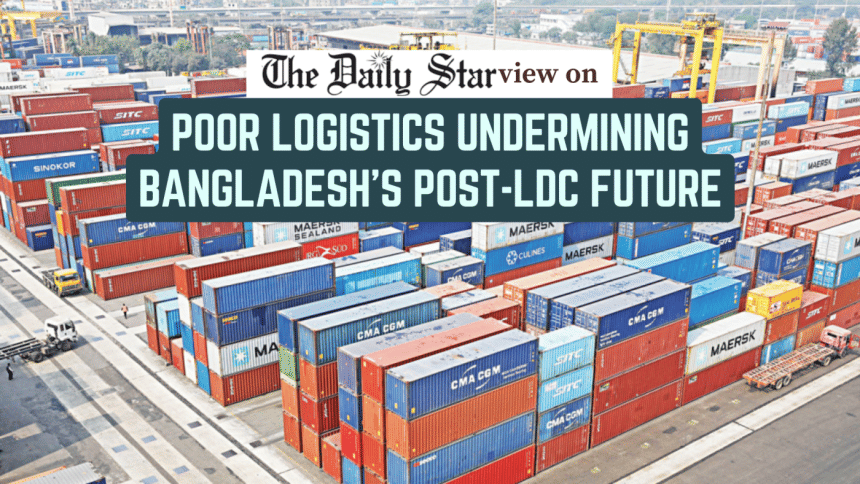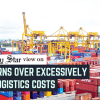We must fix our logistical issues before LDC graduation

A poor and costly logistics system has long been a thorn in the side of Bangladeshi businesses. At a recent roundtable organised by this daily, business leaders identified it as a major hurdle to the country's readiness for graduation from Least Developed Country (LDC) status. They warned that, post-LDC, when preferential trade benefits will end and a high tariff regime will drive up costs, inefficient logistics may further erode our competitiveness.
According to a World Bank official, as much as 16 percent of Bangladesh's GDP is spent on moving goods from factories to customers—well above the global average of 10 percent. Experts argue that the problem lies more with poor coordination and planning than with infrastructure deficits. For example, only four percent of Bangladesh's freight is transported by rail, compared to India's 20 percent. A lack of locomotives and skilled manpower to operate freight trains is commonly cited as a reason for this underutilisation. So why has the railway's freight-carrying operation not been prioritised over the years?
Between 1970 and 2019, the railway's freight transportation fell from 488,000 tonnes per kilometre to 396,000. A Financial Express report notes that since the 1980s, the modal share of road and highway transport for both passengers and goods has increased, while railways have declined and waterways have remained stagnant. However, road transport costs Tk 6 more per tonne per kilometre compared to water transport. Despite this, businesses are still opting for the more expensive mode due to delays and inefficiencies in the cheaper alternatives.
The inefficiencies and underutilisation of our existing sea and river ports compound the logistical challenges. In the last five decades, we have not been able to develop a fully functional alternative to Chattogram port, which often remains congested. Meanwhile, Mongla remains underutilised because of a lack of supporting infrastructure; construction work is still ongoing at Payra even after a decade, and Matarbari is functioning only partially. As a World Bank official recently pointed out, what is lacking in Bangladesh is not planning but execution.
Thankfully, the interim government is preparing a guideline for the next government to eliminate delays and irregularities in project implementation. We also hope that it will form an inter-ministerial panel to address the logistics issues and start implementing the 2024 National Logistics Policy. We agree with experts that the country requires a long-term master plan and a central logistics council—a single authority for coherent policy execution. An integrated transport ecosystem covering roads, rail, waterways, aviation, ports, and digital networks is a must to handle the higher volume of trade and retain our competitive advantage, whether we graduate out of LDC in 2026 or not.
This means not only investing in infrastructure development but also enhancing capacity through manpower development and training. At the same time, relevant laws should be updated to welcome private investment—under government oversight—in sectors such as the railway and waterways to reduce logistics costs and increase efficiency.

 For all latest news, follow The Daily Star's Google News channel.
For all latest news, follow The Daily Star's Google News channel. 









Comments